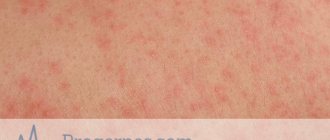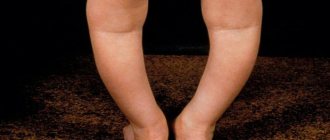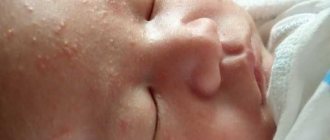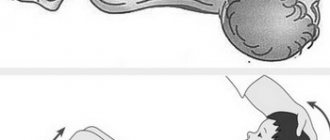Measles is a highly infectious viral disease. Children are most often affected. Although the illness is unpleasant, most people make a full recovery. However, in some cases, serious complications may develop.
Vaccination programs have had a huge impact in reducing the number of measles cases, but measles is still a common disease.
The measles virus is found in droplets of saliva and is most often spread through the nose or mouth of an infected person. Physical contact, coughing and sneezing are the most common ways to spread the infection.
People with measles usually experience flu-like symptoms, such as a runny nose and cough, fever, general malaise, and a gradual rash. Measles symptoms usually improve within 7 to 10 days.
German measles

German measles, also known as rubella, is an entirely separate disease caused by the rubella virus and is usually a milder infection than standard measles. For more information, read the article on rubella.
Symptoms
Once a person gets measles, the virus multiplies in the back of the throat and gradually begins to spread throughout the body.
to show symptoms. The most common early symptoms are:
- Cold symptoms such as runny nose, sneezing and cough
- High temperature or fever
- Inflamed, conjunctivitis
- Sensitivity to light
- Gray-white spots inside the cheeks, mouth and throat
- Nausea
- Fatigue
- Loss of appetite
- Pain and illness
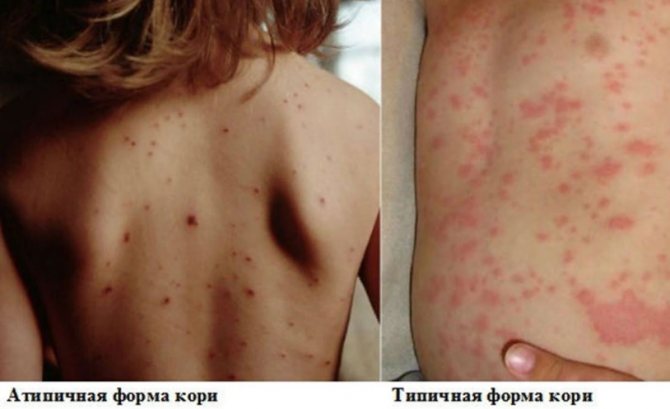
About three to four days after the first symptoms appear, a skin rash usually begins to appear. The rash is perhaps the most noticeable symptom of measles and is recognized by:
- Red-brown spots, flat or slightly raised, that may join together to form spots
- The spots usually start on the head and neck and then gradually spread down the entire body
- The rash may turn pale when pressed at first, but will gradually disappear and remain red when pressed.
- Mild itching
Typically, the rash covers the body for two to three days, taking a few more days to disappear, starting on the head and disappearing in the same order in which it appeared. Because other symptoms begin earlier, affected people usually feel most ill on the first or second day that the rash appears.
Symptoms of measles usually begin to appear on average 7-14 days after exposure.
In general, most people with measles feel better within seven to ten days after symptoms first appear. Sometimes a dry cough can persist even after all other symptoms have disappeared.
During measles infection, the immune system develops resistance to the virus. Therefore, it is extremely unlikely that anyone will get measles more than once in their lifetime.
Symptoms of measles in children
The incubation period (from infection to the first manifestations of the disease) lasts from 7 to 17 days. The child is contagious to others during the last two days of the incubation period and until the fourth day of the rash, i.e. within 9 days. It is important to know that in the first, catarrhal, period (1-3 days), measles manifests itself in the form of a respiratory infection: fever, headache, cough, runny nose, sore throat.
After the incubation period ends, the first symptoms of measles in children appear:
- weakness;
- insomnia;
- general malaise;
- decreased appetite;
- headache;
- high temperature possible.
After some time, specific symptoms characteristic of measles appear:
- tearfulness;
- shrunken voice;
- photophobia;
- purulent conjunctivitis;
- rash.
In children, as the disease develops, typical symptoms of measles appear in the form of enenthem - Filatov-Koplik spots (see photo), usually they look like scattered semolina, white with a red border, which are located along the zone of the mucous membranes of the cheeks in the area of the chewing teeth. Spots can also appear in the mucous membranes of the lips and gums. They appear on the second or third day from the start of snot and cough, two to three days before the appearance of skin rashes. As the disease progresses, these rashes quickly disappear.
The disease includes three stages: catarrhal, rash period and pigmentation period. Let's look at how measles begins in children step by step:
- Latent (incubation) period. Its duration is 17-21 days, the minimum is 9 days. This is the period from the moment the virus enters the child’s body until clinical signs appear. This period is asymptomatic, there are no manifestations. The virus, having entered the child’s body through the respiratory tract (nose, mouth) or eyes, begins to multiply in the cells of the mucous membrane of these organs. After a sufficient number of viruses accumulate in these tissues, they enter the blood, and the second period of the disease begins. A child with measles becomes infectious in the last 5 days of the incubation period.
- The first signs of measles appear in the catarrhal period of the disease. This period does not last long, only 3-5 days, and is characterized by the appearance of the first specific signs: drowsiness and fatigue. This is especially noticeable in young children: just yesterday the child was jumping and skipping, but today he tries to lie down, suddenly fell asleep, became apathetic and indifferent to games. A cough and runny nose may appear, as well as a slight increase in body temperature. The main symptom of measles at this stage is the appearance of a specific rash in the mouth at the base of the teeth. Such spots have gray-white heads with pronounced redness around them. The presence of these spots helps in early diagnosis of the disease and timely isolation of the child, if necessary. All symptoms of measles in children intensify as the disease progresses: cough becomes more frequent, “barking”, body temperature gradually rises and can reach 40°.
- The period of rashes is replaced by catarrhal one. A measles rash on the skin is a characteristic sign of this period. It initially appears behind the ears and on the scalp in the hair growth area, spreading to the face, neck and chest. On the second day, the skin of the shoulders, arms, back, and abdomen becomes covered with a rash; on the third, the skin of the lower extremities, including fingers, and the face turns pale. This sequence of rash spread, characteristic of measles, is a significant criterion for differential diagnosis. Maculopapular exanthema is more pronounced in adults than in children. Has a tendency to merge and become hemorrhagic in severe cases of the disease. The period of rash is considered the height of measles. Against the background of the appearance of a skin rash, the fever becomes maximally pronounced, the symptoms of intoxication worsen, and the catarrhal symptoms intensify. When examining the patient, arterial hypotension, tachycardia, signs of bronchitis and/or tracheobronchitis are detected.
- Pigmentation period. On the 3-4th day from the moment of rash the condition improves. The temperature normalizes, the rash fades away, leaving pigmentation (it will disappear over time). During recovery, drowsiness, irritability and increased fatigue remain.
With atypical measles, symptoms appear mild, and some may not appear. The duration of periods of illness may vary. The period of the rash may be shortened, the catarrhal period may be absent, and the stages of the rash may be disrupted.
Causes

Measles is caused by a viral infection and is highly contagious. It is estimated that about 90 percent of unvaccinated people close to those in the contagious phase of measles will also become infected.
Measles is spread in a similar way to colds and flu, that is, by inhaling airborne droplets that an infected person coughs or sneezes on. Although physical contact, coughing and sneezing are the most common ways to spread the infection, you can also get measles simply by breathing contaminated air or touching a contaminated surface and then inhaling droplets.
The measles virus can live for up to two hours on surfaces and in the air.
Treatment of measles in a child
Infecting a child with measles requires a comprehensive approach to treatment to quickly eliminate symptoms. In addition to the use of special medications, it is necessary to maintain proper nutrition and bed rest.
Drug treatment
To eliminate the symptoms of the disease, it is recommended to use the following medications:
- means to increase the resistance of the immune system are necessary to develop the body’s natural resistance to the virus. The most frequently prescribed are Viferon and Anaferon;
- antihistamines – relieve itching and redness of the skin. Suprastin, Loratadine, Diazolin are prescribed;
- antipyretics – used if necessary to reduce body temperature. Nurofen, Ibuprofen;
- vitamins to boost immunity
For complex stages of the disease, antibiotics are prescribed.
Mode
When a child becomes ill, he is most often treated at home; only children under 2 years of age are hospitalized, as well as in the presence of acute symptoms.
It is recommended to maintain bed rest throughout the entire treatment. The child must be in sterile conditions and not have contact with other family members.
If a child refuses to remain in bed for a long time, it is necessary to interest him in quiet games.
Diet
If you have measles, it is recommended to follow the following dietary tips:
- reduce consumption of foods with high levels of allergens;
- drink large amounts of clean still water;
- increase consumption of fruits and vegetables;
- increase the consumption of warm broths;
- reduce the consumption of fatty meats and fish, replacing them with poultry;
- It is necessary to exclude fried foods and various types of spices from the diet.
Note! It is recommended to drink warm chamomile tea, which reduces inflammation in the mouth and has a calming effect on the body.
Traditional methods
If an infectious infection occurs, you can use traditional medicine methods, which alleviate the symptoms of the disease and reduce the likelihood of complications:
- Raspberry tea – helps strengthen the immune system and reduce body temperature. You need to pour a spoonful of raspberry jam into half a glass of boiling water and consume it warm. It is recommended to use every two hours.
- Viburnum infusion has an antiviral effect. A glass of viburnum berries must be crushed and poured with a liter of boiling water. Leave for 2 hours. Give half a glass three times a day.
- Bran bath – recommended for relieving unpleasant skin symptoms. Place a glass of bran in a fabric bag and lower it into the water when bathing, take a bath for 15 minutes.
Note! For effectiveness, it is recommended to use traditional medicine in combination with drug treatment.
Treatment
There is no specific medicine to treat measles. Because the disease is viral and not bacterial, antibiotics are not effective .
Instead, treatment for measles is aimed at managing and relieving symptoms until the body's natural immune system can clear the infection. Symptoms usually improve within 7-10 days. Typical treatment recommendations include:
- Bed rest to help strengthen the immune system
- Drink plenty of fluids, such as water, fruit juices and herbal teas, to prevent dehydration and relieve a sore throat; alcohol and caffeine should be avoided
- Dimming lights to control light sensitivity
- Humidifier to relieve cough or sore throat
- Ibuprofen and paracetamol/acetaminophen may be recommended for pain relief
- Vitamin A supplements may be recommended for people with measles, especially children, to reduce the severity of the condition and the risk of complications

Please note that taking large amounts of vitamin A can lead to a condition called hypervitaminosis A, or vitamin A toxicity. This is usually the result of a person taking high doses of supplements, so always discuss vitamin A with your doctor before taking it.
How to diagnose and treat
Initially, the diagnosis is made based on external signs . The doctor must know when and with whom the child had contact.
To clarify the diagnosis, a general urine and blood test and a serological blood test are prescribed, which detects the presence of antibodies to the virus.
If complications are suspected, a chest x-ray, electroencephalography, and brain MRI are performed.

There are no specific anti-measles drugs. Treatment is aimed at relieving symptoms and preventing complications.
The body must cope with the infection on its own. If the patient's condition is satisfactory, treatment is carried out on an outpatient basis. The child is prescribed bed rest, plenty of fluids, and good nutrition.
to relieve symptoms :
- Antipyretics based on ibuprofen or paracetamol (Panadol, Nurofen). For babies they are available in the form of suppositories and syrups.
- Syrups for coughs and sore throats (Doctor Mom, Tantum Verde).
- Drops and sprays for runny nose (Nazol baby, Tizin for children).
You should not force feed a child if he does not want to: due to stomatitis, it may be painful for him to eat. You need to give your baby water to drink to avoid dehydration.
Our website contains a lot of useful and important information about the symptoms, treatment and prevention of measles in children. We hope that this will help you cope with such a dangerous disease without consequences and complications. Read about:
- what does the rash look like with this disease in babies;
- can there be complications after measles vaccination;
- Is measles possible in vaccinated children?
Vaccination
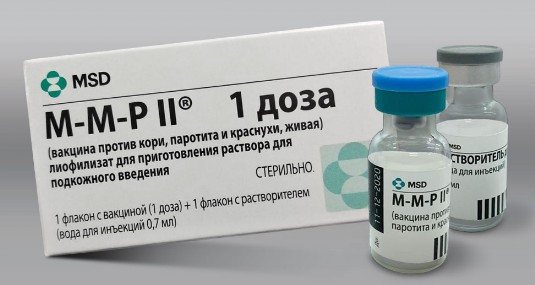
The most common vaccine is the MMR vaccine, which immunizes against measles, mumps, and rubella. Two doses of the MMR vaccine reduce the risk of getting one of these infections by about 97 percent.
The MMR vaccine is first given to children at approximately 12 to 15 months, and a second, booster dose is given between four and six years of age. The vaccine has contraindications, read more about the side effects of the MMR vaccine.
There is another vaccine called MMRV, which protects against measles, mumps, rubella and chickenpox. This vaccine is currently only licensed for use in children aged 12 months to 12 years.
